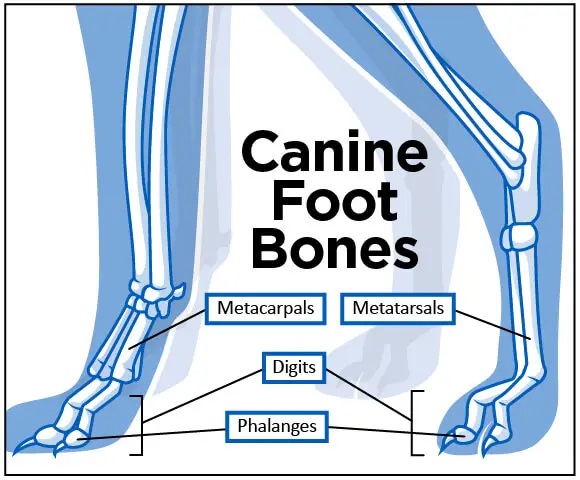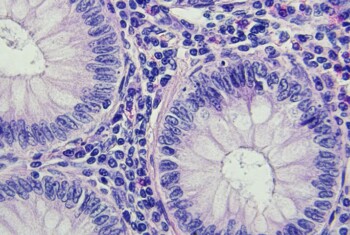Toe fractures: Causes, diagnosis and treatment.
The paws have many small bones. There are four larger bones of the hind and forelimb paws called the metatarsals and metacarpals, respectively. A set of three smaller bones is attached to each of the metatarsal and metacarpal bones, which form the toes, also known as the digits. These toe bones are called phalanges.

Cause of fractures.
- Being stepped on
- Being hit by a car
- Getting the toe caught in a slatted floor (deck) or fence
- Stubbing the toe
Sometimes the injury will result in an open wound over the fracture in which dirt and hair are usually driven into the tissues. This could potentially result in infection and delayed healing of the fracture.
Signs and symptoms.
The clinical signs of a phalangeal fracture include:
- Lameness
- Swelling
- Abnormal movement of the affected digit (instability)
Diagnosis.
In order to diagnose a fracture, x-rays of the affected area are needed. Prior to anesthesia and surgery, blood work is done in order to evaluate the health of the internal organs.
Surgery.
There are three treatment options for phalangeal fractures:
- Primary surgical repair
- Splinting/casting
- Amputation of the digit
Surgery involves  realigning the fractured bones and securing them in place with a combination of plates, screws, pins and wires. Depending on the type of surgical repair used, a splint may be needed for four-to-five weeks after surgery.
realigning the fractured bones and securing them in place with a combination of plates, screws, pins and wires. Depending on the type of surgical repair used, a splint may be needed for four-to-five weeks after surgery.
Casting the paw for eight-to-ten weeks after surgery is another option. Toe fractures that are treated by casting frequently heal with only a fibrous tissue, as a result, successful bony union may not occur. Some dogs will tolerate this and still do well.
If your pet is still in pain due to the failure of bony healing, amputation of the digit can be performed. If the most inner or outer toes are amputated, limb function is generally unaffected. Amputation of one or both of the middle two toes may impede function or cause lameness, as these bear most of your pet’s weight.
Surgical repair of a phalange fracture with implants allows for the best outcome. Your surgeon will help you decide on the right treatment option for your pet.
Uncommon complications following surgery include:
- Infection
- Failure of healing to take place
- Breakage of the metal implants
- Cold sensitivity


